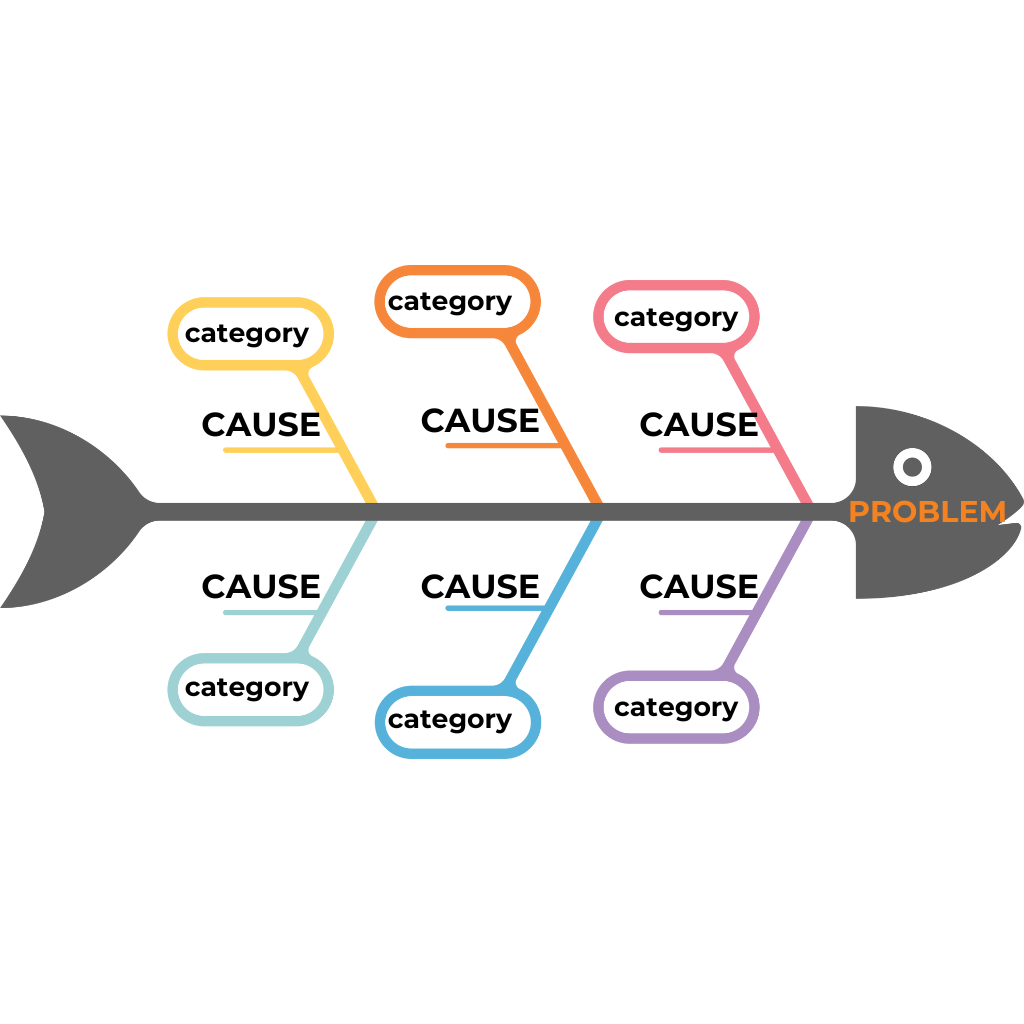Ever wonder why some businesses seem to glide smoothly toward their goals while others constantly stumble along the way? The secret often lies in their processes—specifically, how well they are analysed and optimised. If you want to improve your organisation’s efficiency, understanding the intricacies of process improvement is key.
But let’s be honest—process improvement can feel like a giant, intimidating task for most managers. So, where do you even begin?
It’s actually not that scary! In this post, we’re going to break down the essentials of process improvement analysis in a straightforward way and, dare I say, kinda fun! With these clear, easy-to-follow steps, anyone can dive in, even if you have zero project management experience.
Why Analysis is the First Step to Success?
Think of your business processes like the engine of a car. You wouldn’t expect to reach your destination smoothly if the engine is full of gunk, right? The same goes for business processes—they need regular check-ups and tune-ups to run efficiently. That’s where analysis comes in.
Kicking off the Analysis Phase is like popping the hood on your car’s engine. You’re about to dive deep into how things work (or don’t work), identify the gunk clogging up your engine, and figure out how to clean it out.
The goal is simple: align your team on what needs to be done, define your objectives, and gather all the necessary resources to make the improvements stick.
The Analysis Phase: Breaking it Down
So, what does the Analysis Phase involve? Let’s walk through the essential steps:
Set the Stage (Kick-off Meeting)
- Objective: Formally move from the initial discovery of your processes into a detailed analysis.
- What Happens: You review everything uncovered so far, define what you’ll focus on next, and make sure everyone knows their role in the upcoming analysis.

Pro Tip: Keep this meeting tight and focused. Don’t let it become a marathon session where everyone’s eyes glaze over. Get to the point, assign tasks, and move on.
Gather the Facts (Collect Data):
- Objective: Collect every scrap of data related to your processes—all available documents, quantitative (numbers, metrics) and qualitative (opinions, feedback) data.
- Why It Matters: Without accurate data, your analysis is just guesswork. You need hard facts to identify where things are going wrong.

Pro Tip: Don’t overlook the small stuff. Sometimes, the most significant inefficiencies hide in the tiniest details.
See the Big Picture (Process Mapping):
- Objective: Create detailed maps of your current processes, showing every step, input, output, and stakeholder involved.
- Why It Matters: A process map is like a blueprint for your business operations. It helps you see where the bottlenecks, redundancies, or gaps are.

Pro Tip 1: Involve team members who live and breathe these processes daily—they’ll know if your map matches reality or if you’re missing something. Encourage honesty.
Pro Tip 2: Use tools like the Process Space® Platform to map your existing processes and plan new ones.
Dig Deeper (Problem Identification):
- Objective: Pinpoint precisely where the problems lie. Clearly define the issues you’re facing, whether inefficiencies, bottlenecks, or recurring errors. It’s like diagnosing what’s wrong with the car before deciding how to fix the engine, rather than just making surface-level adjustments like changing the oil. Once you’ve accurately identified the problem areas, you can dig deeper to uncover their root causes.
- Tools You Can Use: Start by clearly defining the problems—look at your data, gather feedback from stakeholders, and observe the processes firsthand. Once the problems are well-defined, you can use tools like:

=> The 5 Whys: Ask “why” multiple times to drill down from the surface problem to the root cause.
=> Fishbone Diagrams (Ishikawa Diagram): Visualise the problem and its potential causes in different categories like people, processes, equipment, and materials.
=> Pareto Analysis: Identify the most significant problems that are contributing to the majority of issues, allowing you to focus your efforts on where they’ll have the biggest impact.

Pro Tip: Avoid the temptation to stop at the first “why.” Keep digging until you hit the real root of the issue.
Mind the Gap (Gap Analysis):
- Objective: Compare where you are now with where you want to be. Identify the gaps in your processes and figure out how to bridge them.
- Why It Matters: Without knowing where the gaps are, you can’t make a reliable plan to close (eliminate) them.

Pro Tip: Not all gaps are created equal. Prioritise them based on their impact and feasibility of fixing.
Actionable Insights and Planning: Make it Stick
So, you’ve done the hard work of digging into your processes and uncovering the root causes of inefficiencies. Great! But here’s the thing—analysis alone won’t get you very far. To truly make a difference, you need to turn those insights into actionable plans that drive real change. This is where the rubber meets the road.
Develop a High-Level Improvement Plan
- Objective: The goal here is to shape all the valuable information you’ve gathered into a clear, strategic plan. This plan should be your roadmap for tackling the most critical issues first—think of it as your prioritised to-do list that aligns with your business goals.
- What to Include: Your plan should be comprehensive but focused. It needs to outline:
- Prioritise Initiatives: Start with the areas that will have the most significant impact on your business. Don’t spread yourself too thin—concentrate on the changes that will give you the most bang for your buck.
- Required Resources: Identify what you’ll need—people, budget, tools, or time—to make each initiative a success.
- Timelines: Set realistic deadlines for each step in the process. A timeline helps keep everyone accountable and ensures that progress is being made.
- Identify IT Systems and Affected Parties: Pinpoint all the IT systems involved and identify everyone who will be impacted by the changes. This includes both internal teams and external partners (software developers, suppliers, and other stakeholders.) Also, consider the availability of these external partners—if you’ll need their support, planning around their schedules is crucial for a smooth implementation.
- Expected Outcomes: Clearly define what success looks like for each initiative. This will help you measure the effectiveness of your efforts and make adjustments if needed.

Pro Tip: Resist the urge to fix everything at once. It’s tempting to tackle every issue you’ve identified, but that approach can quickly become overwhelming and dilute your efforts. Instead, focus on the high-impact areas that will bring the most significant improvement to your processes. By concentrating your energy on these key areas, you’ll create a solid foundation for future enhancements and avoid burnout.
Get Everyone on Board (Engage Stakeholders):
- Objective: Make sure that everyone involved, from top management to frontline employees, understands the plan and their specific role in carrying it out. This means clearly communicating the objectives, the expected outcomes, and how each team member’s work contributes to the project’s overall success.
- Why It Matters: Even the best plan will fail without buy-in from those who need to execute it. When everyone understands the “why” behind the strategy and sees how their efforts will contribute to the bigger picture, they’re more likely to be engaged, motivated, and proactive in their roles.

Pro Tip: Keep communication open and ongoing. Don’t think of this as a one-time meeting where you lay out the plan and move on. Instead, make it a continuous conversation. Regular check-ins, updates, and open forums for feedback will help you maintain alignment and address any concerns or roadblocks as they arise. This ongoing dialogue ensures that everyone stays engaged and feels like a valued part of the process, increasing the chances of your plan’s success.
Risks and Pitfalls: What to Watch Out For
No plan, no matter how well thought out, is completely foolproof. The analysis phase is particularly prone to a few common pitfalls that can derail your efforts if you’re not careful. Here are some key risks to keep an eye on:

Incomplete Documentation: One of the most significant risks is missing out on critical details during documentation. When you fail to capture every step of the process, you leave gaps in your process maps. These gaps can hide bottlenecks or issues that, if addressed, could lead to substantial improvements. Always ensure your documentation is thorough and up-to-date, capturing every nuance of the process.
- Overcomplication: It’s easy to get caught up in the details and end up creating overly complex process maps that are difficult to understand. This can turn your maps into confusing “spaghetti diagrams,” where the actual flow of processes becomes hard to follow. Please keep it simple and clear. Focus on the main steps and decision points, and avoid cluttering the map with too many minor details that don’t add value to the analysis.
- Surface-Level Analysis: Stopping at problem symptoms without digging deeper to find the root causes is a common mistake. Addressing only the surface-level issues might provide short-term relief, but the underlying problems will continue to cause disruptions. Use tools like the 5 Whys, Pareto Analysis or Fishbone Diagrams to ensure you’re identifying and tackling the actual root causes of the problems.
- Ignoring Stakeholder Input: The people on the ground often have the best insights—don’t overlook their feedback. Engage these stakeholders early and frequently, and make sure their voices are heard throughout the analysis phase.
Additional Risks to Consider:
- Analysis Paralysis: While thorough analysis is essential, there’s a risk of over-analysing every aspect of your processes. This can lead to delays and a failure to take action. To avoid this, set clear timelines and decision points. Remember, the goal is to improve, not achieve perfection.
- Lack of Clear Objectives: Without clearly defined goals, your analysis can become directionless, wasting time and resources. Start with a clear understanding of what you want to achieve through the analysis. This will keep your efforts focused and aligned with your broader business objectives.
- Resistance to Change: Even with a solid analysis and a well-crafted improvement plan, change can be met with resistance. Employees may be reluctant to alter their routines or adopt new processes. Anticipate the resistance and address it through effective communication, training, and involving stakeholders in the change process.
Ready to Take Action?
By the end of your analysis phase, you should clearly understand where your processes stand, where they fall short, and how to fix them. But remember, analysis is only the first step. The real challenge—and reward—comes from implementing the improvements and seeing them through.
So, what’s next? Don’t let your analysis gather dust. Use it as a launchpad for real, impactful change. And if you’re feeling overwhelmed, remember—every significant improvement starts with a single, well-analysed step.
Ready to rev up your process improvement engine? Let’s get started! #NOEXCUSES
